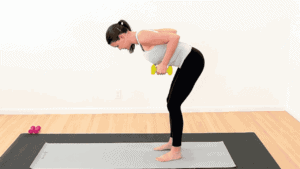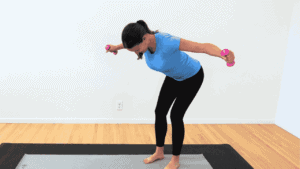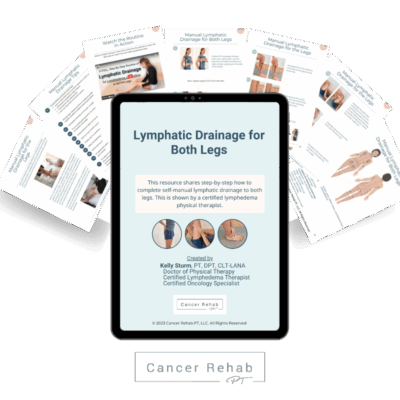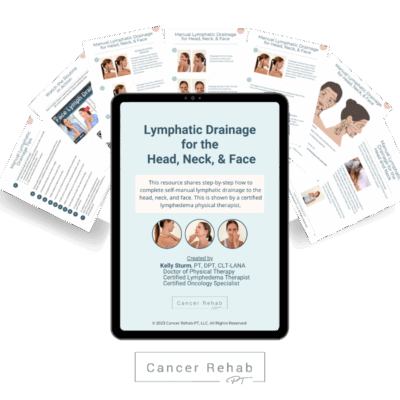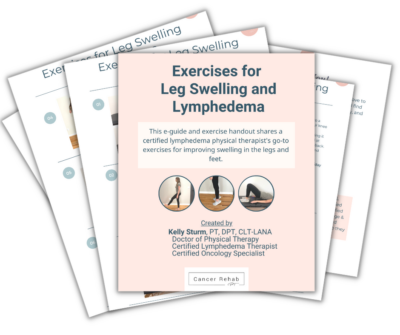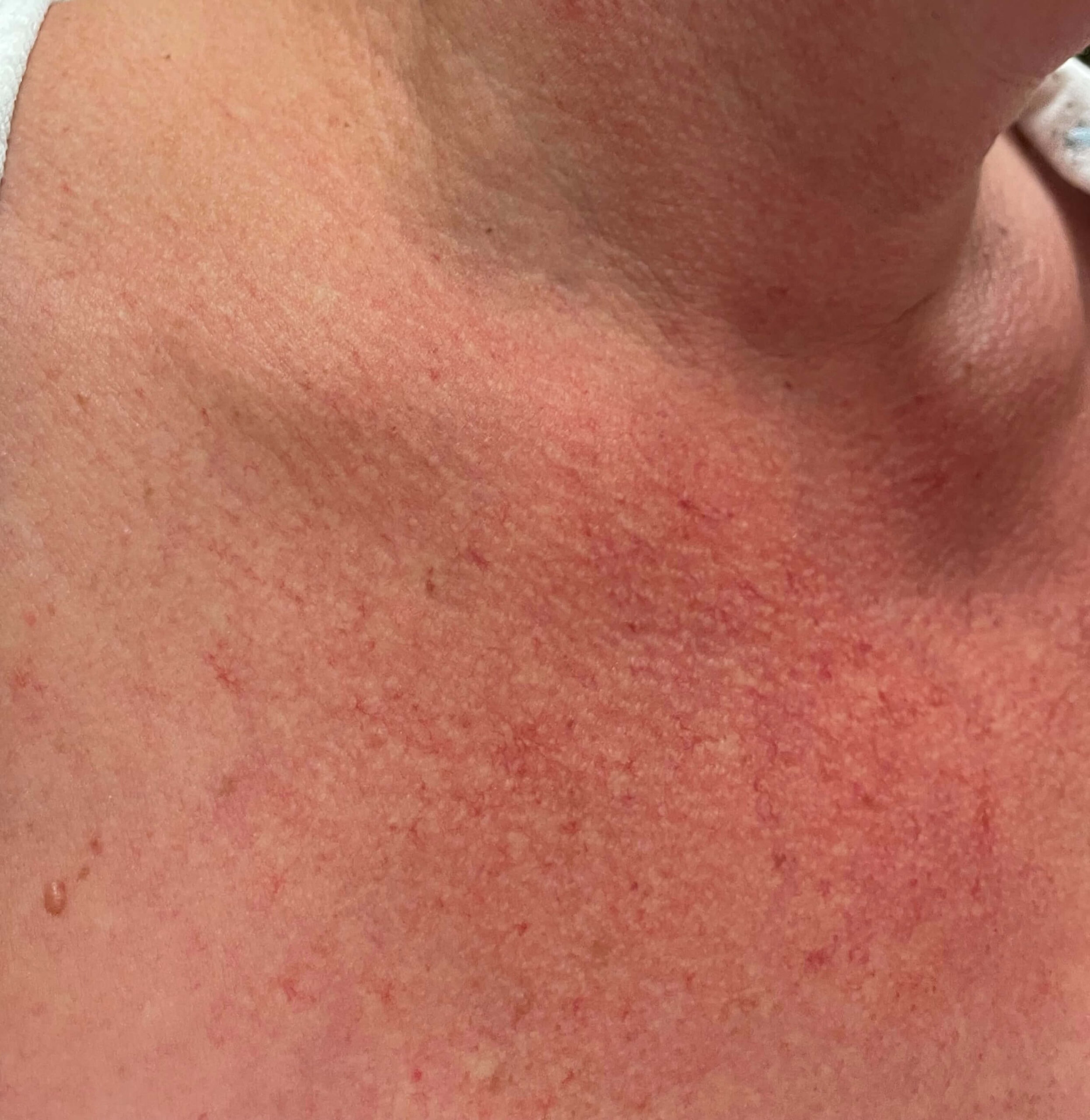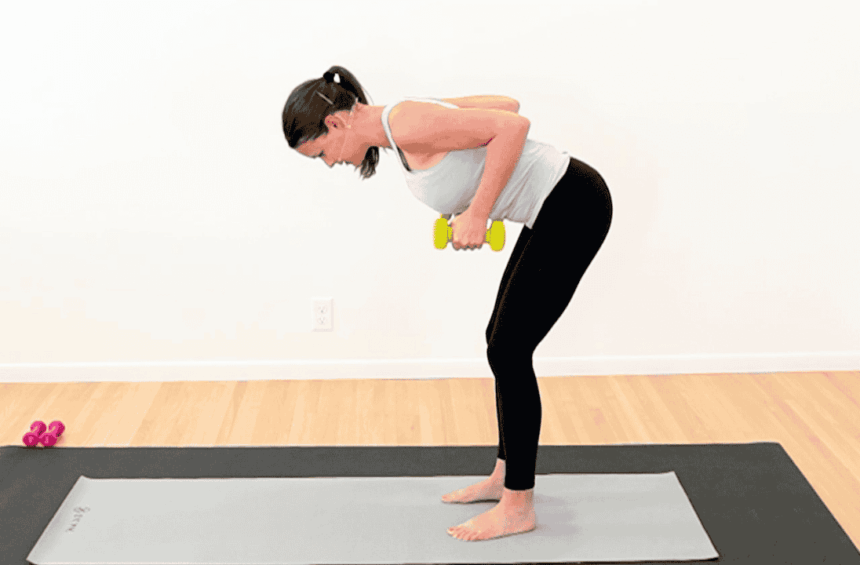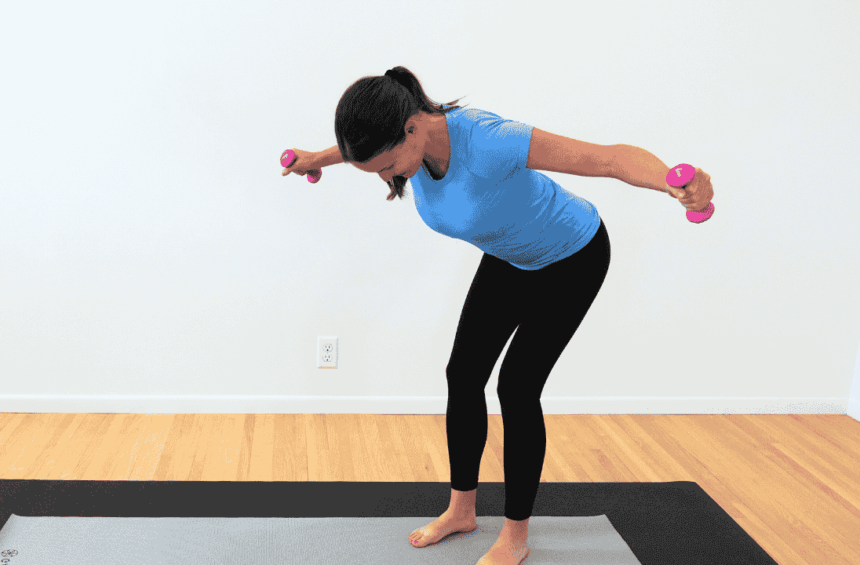Radiation therapy is a common and highly effective breast cancer treatment that uses high-energy radiation to target and destroy cancer cells.
It’s highly effective, but it can also bring about unpleasant side effects that can impact your quality of life during and after treatment. Read this article to learn more about the side effects of radiation for breast cancer and what to do to minimize them.
What Is Radiation Therapy and Why Is It Used to Treat Breast Cancer?
Radiation therapy is one of the most effective ways to treat breast cancer. It has been proven1 to substantially reduce negative breast cancer outcomes as well as recurrence.
Radiation works by targeting cancer cells with high-energy rays, damaging their DNA and preventing them from dividing and growing. This treatment can be done externally using a machine that directs radiation beams toward the affected area (external beam radiation) or internally by inserting radioactive implants near the tumor site (known as brachytherapy).
Radiation treatments are often used after breast cancer surgery to destroy any remaining cancer cells and reduce the risk of cancer recurrence. Radiation therapy can also be used before surgery to shrink tumors in breast tissue and increase the likelihood of a positive surgery outcome. Radiation therapy is typically done by a radiation oncologist.
Common Anxieties About Radiation Therapy
Many people feel anxious before starting radiation therapy. It’s completely normal to feel worried and have questions. Let’s alleviate some common anxieties that you may have.
First, it’s important to understand that undergoing radiation therapy doesn’t make you radioactive or pose any risk to those around you, such as family members or pets. The radiation used in therapy is precisely targeted to the treatment area so that it’s safe for you and the people around you.
That said, it’s important to avoid pregnancy while you’re undergoing radiation therapy for breast cancer because of the potential risks to a developing fetus.
Many people also worry about the radiation therapy side effects. While it’s true that you may experience side effects such as fatigue, skin irritation, or changes in appetite, these effects are typically temporary.
There are some long-term side effects and risks associated with radiation therapy, but there are certain steps that you can take to manage them. You can learn how to treat radiation side effects in my program Breast Cancer Rehab.
Short-Term Side Effects of Radiation for Breast Cancer
Radiation exposure will most likely cause unpleasant side effects. However, many of them are short-term and typically resolve after treatment completion. While they’re often challenging, they are generally manageable with supportive care.
Educating yourself about the possible side effects also empowers you and makes you feel more confident before starting radiation therapy.
1. Skin Irritation
Skin irritation is a common side effect of radiation therapy, especially in the area being treated (ex: breast skin). The skin may become red, sensitive, and prone to dryness, resembling a mild to moderate sunburn. Some people may also experience itching, peeling, or blistering of the skin.
These skin reactions can be highly uncomfortable, but these are a few things you can do to help your skin heal faster.
Gently cleanse the treated area with a mild, fragrance-free soap and lukewarm water, patting the skin dry with a soft towel. Avoid exposure to direct sunlight and extreme temperatures, as well as tight clothing that may rub against the sensitive skin. Your healthcare team may also recommend over-the-counter topical creams or ointments to help with symptoms.
2. Fatigue
One of the effects of radiation therapy is that it can make you feel exhausted during and after treatment sessions. This fatigue can interfere with daily activities, making it challenging to maintain usual routines. This radiation therapy side effect is unpleasant, but it should resolve shortly after your treatment is complete.
As you’re going through radiation therapy, prioritize rest as much as you can. If you feel up for it, gentle exercise, such as walking or yoga, can also boost energy levels and improve overall well-being. Eating a balanced diet and avoiding caffeine also helps combat fatigue.
3. Breast Swelling and Tenderness
Your breasts may become swollen and tender as a result of inflammation and fluid buildup in the treated area after you receive radiation therapy.
Wearing a well-fitted, supportive bra can provide gentle compression and reduce movement, which helps minimize pain and swelling. You can also apply cool compresses to the affected area. In some cases, your radiation therapy team may advise you to take over-the-counter pain relievers.
4. Changes in Breast Appearance
One of the effects of radiation therapy is that your breasts may change their appearance.
These changes can include skin discoloration, thickening of breast tissue, and changes in breast size or shape. The treated breast may feel firmer or denser to the touch, and the skin might develop a darker, tanned appearance or areas of redness. These changes should resolve within a few weeks of treatment, but sometimes they can become long-term.
Moisturizing the skin regularly can help maintain skin health and alleviate dryness or tightness. Wearing a well-fitted bra can provide support and help accommodate any changes in breast size or shape. Additionally, doing gentle stretching exercises can improve flexibility and comfort in the affected area.
5. Hair Loss
You may experience hair loss as a result of your treatment. This side effect of radiation therapy can be highly distressing to many people.
If the hair loss affects the scalp, using mild shampoos and avoiding heat styling tools can help preserve your hair and protect your scalp. Wearing soft hats, scarves, or wigs can provide coverage and boost confidence.
6. Feeling Sick
Feeling sick, including symptoms like nausea and a general sense of unwellness, is a short-term side effect some people experience during radiation therapy for breast cancer. It’s important to remember that these physical symptoms will pass and you’ll feel healthy again.
Eating small, frequent meals rather than large ones can help keep nausea at bay, and opting for bland, easy-to-digest foods can minimize stomach discomfort. Doing activities like walking, deep breathing, and meditation can also help. Additionally, your healthcare provider might recommend anti-nausea medications if symptoms persist.
Long-Term Side Effects of Radiation for Breast Cancer
Most side effects of breast cancer radiation therapy resolve shortly after your treatment schedule is complete. However, some can persist or emerge as long-term issues. Early detection and proactive management can help minimize their impact and improve your quality of life.
The severity of long-term side effects often depends on the amount of radiation you receive and the radiation therapy techniques used. Someone with early-stage breast cancer will most likely need a lower dose of radiation than someone with advanced breast cancer.
1. Breast Changes
Over time, your breast tissue may become firmer and denser due to radiation fibrosis, a process where the connective tissue thickens and hardens. This can lead to a sensation of heaviness or discomfort and may affect the breast’s overall symmetry and shape. The skin in the treated area might also show permanent discoloration or have a leathery texture.
Moisturizing regularly with gentle skincare products can help improve the appearance of your skin. Targeted stretches and exercises can also be extremely helpful. While these changes can impact your body image and self-esteem, it’s possible to minimize their severity over time. Start with these exercises:
2. Skin Changes
After radiation therapy for breast cancer, you may experience chronic changes such as persistent dryness, increased sensitivity, and thickening of the skin in the treated area. The irradiated skin may also develop a darker, more pigmented tone compared to the surrounding areas, and in some cases, the skin may become more prone to irritation and injury.
Using mild, fragrance-free moisturizers and protecting the skin from the sun can help maintain hydration and reduce the risk of irritation.

3. Lymphedema
Radiation therapy is an effective way to kill cancer cells, but it unfortunately raises your risk of developing a chronic condition called lymphedema.
Lymphedema is a chronic condition characterized by swelling in the arm, hand, or chest area because of the accumulation of lymph fluid. Your lymphedema risk may be higher if your lymph nodes were impacted during breast cancer treatment.
There are exercises and management strategies that can help prevent lymphedema from developing. Early intervention can also help you significantly minimize lymphedema symptoms and, in some cases, even reverse them. I share targeted lymphedema prevention strategies in Breast Cancer Rehab.
4. Cardiovascular Complications
Radiation therapy for breast cancer can have long-term effects on the cardiovascular system, increasing the risk of heart disease and other cardiac complications in some people.
Doing regular cardiac screening and adopting heart-healthy lifestyle habits can help mitigate the risk of cardiovascular complications after breast radiation.
5. Loss of Range of Motion and Tightness
Radiation therapy is effective in targeting and destroying cancer cells, but it can also cause changes to your muscle tissue and tendons. Radiation fibrosis can embed in and around these tissues, causing a loss of elasticity and leading to tightness and a loss of range of motion. For example, it may become difficult to reach above high in cupboards or to clasp a bra. I teach how to reduce this side effect in Breast Cancer Rehab.

Side Effects of 5-Day Radiation for Breast Cancer
5-day radiation therapy for breast cancer condenses treatment into a shorter timeframe, delivering higher doses over five days. This can be a more convenient way to get radiation therapy for some people. This method presents similar side effects to conventional radiation therapy, but because of higher doses, they may be more intense.
You can expect short-term effects such as skin irritation, fatigue, and breast swelling which should improve shortly after the treatment is complete. Long-term side effects may include skin and breast changes, along with a risk of lymphedema. You can learn more about managing the side effects of radiation in Breast Cancer Rehab.
Side Effects of Radiation for Breast Cancer After Lumpectomy
You may need radiation therapy after lumpectomy to target any remaining cancer cells in the breast and reduce the risk of cancer recurrence.
Once the treatment begins, you may experience common side effects like skin irritation, fatigue, and breast swelling. Your skin may become red, dry, and sensitive. These side effects should subside once your treatment ends, but certain changes in your skin and breast appearance may become long-term. Radiation therapy also increases your risk of developing lymphedema.
Managing Side Effects of Radiation for Breast Cancer and Improving Your Quality of Life
Unfortunately, radiation therapy for breast cancer often comes with unpleasant side effects. However, many of these side effects are often manageable with proper care and support.
By following recommended skincare routines and engaging in gentle exercises, you can alleviate discomfort and minimize the impact of radiation therapy side effects. I share effective routines and tips in Breast Cancer Rehab.
FAQs
What to expect after radiation treatment for breast cancer?
After completing radiation treatment for breast cancer, you can expect a period of recovery as your body adjusts to the effects of radiation. Common short-term side effects such as skin irritation, fatigue, and breast swelling may continue for a few weeks after treatment. However, these symptoms typically gradually improve over time as your body heals. That said, certain changes in your skin and breast appearance can become long-term. People who go through radiation therapy also have a higher risk of developing lymphedema.
How many rounds of radiation is normal for breast cancer?
The answer to this question depends on many factors such as the specific type and stage of cancer, your treatment plan, the type of radiation therapy (ex: internal radiation therapy, adjuvant radiation therapy, etc.), and more. In many cases, radiation treatment takes approximately five to seven weeks, totaling around 25 to 30 treatment sessions. Some people go through accelerated treatment schedules with higher doses delivered over a shorter period of time.
What not to do after radiation treatment?
There are a few things that you should avoid after radiation treatment to heal and recover faster. It’s important not to expose the treated area to direct sunlight because radiation can make your skin more likely to sunburn. Avoid harsh skincare products and wearing tight-fitting clothes that may further irritate your skin. Overall, you should prioritize rest and gentle movement to support your body after radiation treatment.
What will my breast look like after radiation therapy?
Your breasts’ appearance and texture may change after radiation therapy. These changes may include redness, darkening of the skin, and a sunburn-like rash in the treated area. Over time, the skin may become dry, sensitive, and prone to peeling or blistering. In some cases, the breast tissue may feel firmer or denser due to fibrosis, and there may be slight changes in size or shape. While these changes can be concerning, they are usually temporary and gradually improve over time.
Get More Support in Breast Cancer Rehab
While it may not be possible to prevent side effects of radiation therapy, there are ways to manage them and minimize their impact. I share strategies and targeted exercises to help with both short-term and long-term radiation treatment side effects in Breast Cancer Rehab.
Article Sources
- Early Breast Cancer Trialists’ Collaborative Group (EBCTCG), Darby S, McGale P, et al. Effect of radiotherapy after breast-conserving surgery on 10-year recurrence and 15-year breast cancer death: meta-analysis of individual patient data for 10,801 women in 17 randomised trials. Lancet. 2011;378(9804):1707-1716. doi:10.1016/S0140-6736(11)61629-2 ↩︎

